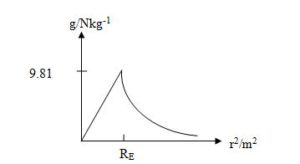Notes on gravitational field for Cambridge A level and UTME

Notes on gravitational field for Cambridge A level and UTME
According to Newton, all masses create a gravitational field in the space round them. The field give rise to a force on any object having mass placed in this field. The moon orbits the earth because it experiences a gravitational force due to the earth’s gravitational field. If an object is placed in a gravitational field, a force will act on the object because of its mass.
What is meant gravitational field?
A region where a mass/body experiences a force of attraction due its mass.
The Earth has a radial field of gravity, which means that the gravitational field is circular and acts from the center point.
The Earths radial gravitational field is represented by the lines

- The arrows on the field lines show the direction of the gravitational force on a mass placed in the field
- The spacing of the field lines indicates the strenght of the gravitational field-the farther apart they are, the weaker the field
Gravitational field strenght
Gravitational field strenght at a point is the gravitational force exerted per unit mass on a small object placed at that point.
g = f/m
g = gravitation field strength
m = test mass
units = N kg-1 = ms-2

Newton’s law of universal gravitation: it states that any two point masses attract each other with a force that is directly proportional to the product of their masses and inversely proportional to the square of their separation

G is the gravitational constant 6.67 x 10-7 Nkg-2m2
since f= GMm/r2
g =f/m = GMm/mr2 = GM/r2 (This equation does not depend upon the mass of the small object )
g is the gravitational field strenght
Gravitational potential energy: at a point is the work done in bringing a mass from infinity to a point
gravitational potential is always negative: because of the force of attraction that exist between two masses
- Zero of potential energy is at infinity
- Potential energy taken as a negative value
- The work done in moving a mass between two points in a gravitational field is independent of the path taken

Centripetal Acceleration
•For an orbiting satellite, the gravity provides centripetal force which keeps it in orbit

Geostationary Orbits

•Geostationary satellite is one which is always above a certain point on the Earth
•For a geostationary orbit: T = 24 hrs. and orbital radius is
a fixed value from the center of the Earth
By using r3 / T2 the radius of orbit needed for geostationary orbit can be calculated

Recommended: Questions and answers on gravitational field
